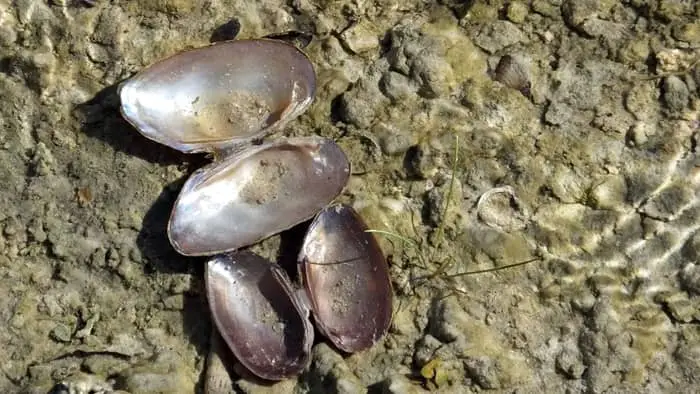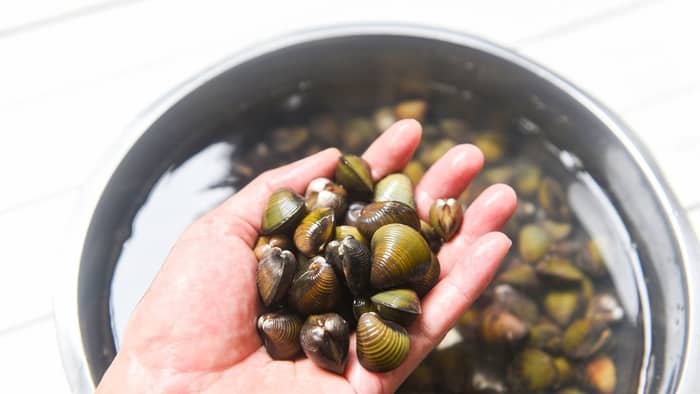Last Updated on May 5, 2022 by admins
Freshwater clam for aquarium is a wonderful addition, which contrary to popular belief, is not difficult to keep successfully, long as you know what you’re doing.
If you’ve ever walked along the beach, you’ve definitely seen clamshells everywhere. The variations in their shapes, sizes, and colors are truly amazing. However, did you know that there is a freshwater clam for aquariums? While it may sound impossible, it really is true.
Truth be told, they aren’t the most popular type of pets for aquariums. This is mainly because people are afraid that keeping them involves a lot of responsibility. This is only partially true, keep in mind that they are fairly easy to care for, as long as you know what you’re doing. Therefore, stay with us and find out everything you need to know about freshwater clams for the aquarium.
Are Freshwater Clams Really Good For Your Aquarium?
Truth be told, when it comes to freshwater clams for aquariums, this is a rather controversial topic. – They will not cause any damage if the conditions in your aquarium are good. They do quite well in an established tank, which is preferably at least a year old, has a soft substrate, and lots of plants.
Apparently, most issues with freshwater clams come from a lack of available food in the water column. Therefore, try to provide them with as much natural food as possible. Read more about them below.
Freshwater Clam for Aquarium; Advantages
One of the main advantages of their presence in the aquarium is the filtration of food from the water column. They are a truly popular team for cleaning tanks with green water and film algae problems.
Did you know that they have the ability to make water from a tank clean overnight and at the same time start helping with water quality issues? Also, they don’t require much space at all and are different than most other types of cleanup crew species. In addition, they get along great with most invertebrates and fish, except those that are able to crack the shell, such as freshwater puffers.
It would be good to put them in a tank of a minimum size of 10 gallons (37.8 L). As for water parameters, clams are not too demanding as long as conditions remain stable and too much food isn’t completely filtered out.
Freshwater Clam for Aquarium; Problems
While freshwater shellfish seem simple and straightforward, many hobbyists would disagree that they are suitable for everyone. One of the main problems when keeping freshwater clams is that by the time they find the dead clam or mussel, the rest of the tank will most likely have been affected.
Furthermore, be extremely careful as they spend their time mostly buried and covered, so dead freshwater clams are mostly found only when there is a dramatic increase in ammonia which in the meantime has probably killed everything else in the tank.
They are known for excellent aquarium water filtration, however, the problem arises when the aquarium runs out of food because they literally devour it. Therefore, make sure you have enough food in the tank.
What Do They Eat?
Clams are filter feeders, which simply means that they acquire life-sustaining nutrients by filtering the water around them. Since most aquariums, especially domestic ones, don’t have enough proper suspended particles throughout the water in order to sustain the bivalve’s life, they need supplemental feeding. In case it is missing, the clams will most likely die of starvation very quickly.
They have the ability to survive without food for a while, but not for long. That is why most of them die if they find themselves in the hands of inexperienced keepers.
As for the feeding process, they eat using siphons and require supplementation in the form of fish flakes or pellets with high calcium content In addition, they love to eat some algae wafers as well as falling plant matter from live aquarium plants.
Note: Always have ammonia test kits on hand. This way you will be sure that your water parameters are within normal limits.
In Conclusion
As for freshwater clam for aquarium and whether it is worth the risk, it is a decision for you to make. If you do decide to keep them in your aquarium tank, make sure that the tank is fully established and mature with enough food circulating throughout the water to keep your clams full. Remember that regular water tests for ammonia are mandatory.
If you have any questions regarding freshwater clams for aquarium, feel free to contact us in the comments below. We are expecting you.
Also, take a look at this article as well.
FAQs
Do Freshwater Clams Eat Algae?
Unlike plants that are known to filter chemicals out of the water and use light to make food, clams are a whole other story. Namely, they eat small organisms as well as algae that they pull out of the water.
So, it’s no surprise that hobbyists usually refer to them as “filter feeders”.
Do Freshwater Clams Make Pearls?
Most natural pearls are mostly found in oysters, however, they are not the only exception. Namely, clams can technically make pearls. However, this doesn't apply to all species equally because only some saltwater clams and freshwater mussels are used to commercially grow cultured gem-grade pearls.
Do Fish Eat Clams?
True, clams have their natural predators. Some of them are gulls, tautogs, waterfowl, cownose rays, blue crabs, and let's not forget -oyster drills. Fish as well as feathered enemies love to eat them.
For example, shorebirds eat them by breaking them, that is, they simply drop them on boulders from a great height.
How Often Do Freshwater Clams Reproduce?
Freshwater clams have, above all, a unique way of reproduction. Did you know that they can be miles away from their mate at the time of fertilization?
Apart from the method, freshwater clams are also unique in the frequency of reproduction. It may take several years, ie somewhere between 9-12, before juveniles mature and can reproduce as an adult, and this happens only once out of seven or more years.

